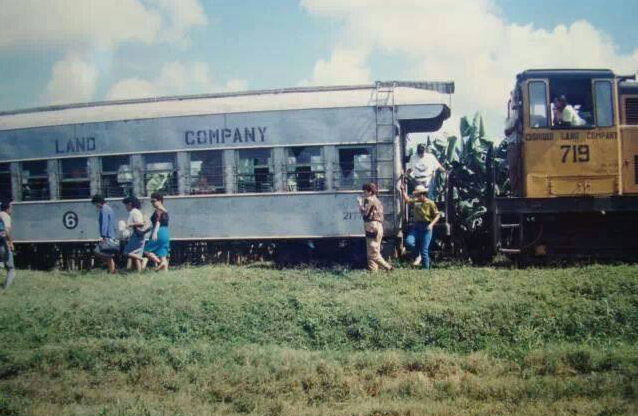The election of a new government in Panama, on May 5, has revitalized expectations for constructing a railroad connecting the capital, Panama City, with David, the country’s third-largest urban center, 450 kilometers to the west. The history of the trans-Isthmus railroad, operational since 1855, is a reference that provides some clues about the challenges, implications, and interests of this controversial project, crucial for the future of the nation.
For Latin American elites in the 19th and early 20th centuries, railroads symbolized progress and modernization. These elites saw the railroad as a key tool for overcoming backwardness, improving communications and transportation, integrating isolated territories, and fostering national unity. In the mid-19th century, the construction of a trans-Isthmian railroad, then part of Gran Colombia, offered to renew the trans-Isthmus function, inherited from the colony, and connect it to new trade flows, especially with the emerging power, the United States.
After several failed attempts by European and North American investors, on December 28, 1848, John Stephens, William Aspinwall, and Henry Chauncey signed a contract with the Colombian government, represented by Pedro Alcántara Herrán, to build the trans-Isthmian railroad, founding the Panama Railroad Company. According to historian Juan Santiago Correa from Externado de Colombia University, this railroad was the only one built with the express purpose of connecting the oceans, not connecting local production centers with international markets, being financed with foreign capital, and achieving high profitability while maintaining a monopoly on intercontinental routes.
The railroad was a fundamental part of the French and American efforts to build the Panama Canal at the end of the 19th century and the beginning of the 20th century. With the construction of the Canal, the Americans would rebuild it with a new route and machinery. The railroad would operate during the entire period in which the Canal Zone existed, and the railroad would again pass into Panamanian hands with the entry into force of the Torrijos-Carter Treaty in 1979.
Privatization of the Trans-Isthmian Railroad
With the transfer to Panamanian hands, the railroad would enter a state of abandonment until its privatization. A concession was granted to the Panama Canal Railway Company through the approval of Contract-Law 15 of February 17, 1998, which gave exclusive rights over the construction and operation of the Panama Railway and its intermodal terminals.
The concession was granted for 25 years, extendable for an additional 25 years, “provided that the Company has complied with the terms of this contract”. Among other obligations, the concession establishes that the company must pay 10% of the gross income from all sources of revenue from the operation of the railroad.
Currently, the Panama Canal Railway is part of a consortium formed by Mi-Jacks Products and Canadian Pacific Railway Limited, which in September 2021 acquired the complete operation of Kansas City Southern, one of the two companies that had originally obtained the concession for the trans-isthmian railroad from the Panamanian government in 1998. With this acquisition, Canadian Pacific Railway Limited takes over the operation of railroads in Canada, the United States, Mexico, and Panama.
Throughout the first 25 years of the Panama Canal Railways concession, which ended in February 2023, the operation was highly profitable. According to statements made by Thomas Kena, president and CEO of the company in 2015, by that date the railroad had expanded its original capacity from 400,000 to 800,000 containers per year, preparing at that time for the construction of a new port at the Pacific entrance of the Canal, which ultimately did not come to fruition.
The drought caused by the El Niño phenomenon has highlighted the importance of the trans-isthmian railroad for the operation of the Panama Canal. With draft restrictions imposed by the Canal Authority from May 2023 to mitigate the impact of the drought, shipping operators such as Maersk decided to move part of their cargo from port terminals at both ends of the Canal using the railroad. Martes Financiero, a Panamanian newspaper, reported in April this year that during September, October, November, and December 2023, more than 600,000 TEUs per month would have been moved by this means.
The new train: a change in regional and economic structure
What little is known about the construction of the Panama to David railroad comes from media publications on the feasibility studies conducted by China Railway Design Corporation, and delivered to the government of Panama in 2019. At that time, the study proposed the construction of a train line for passengers and cargo with 21 stops and a stretch of 391.3 kilometers long, at an estimated cost of US$4 billion and a duration of 6 years.
There are still many questions about the scope, characteristics, vision, and expected impact on the economic, logistical, urban, and environmental structure of the project. For example, its route alone represents a challenge due to the need to negotiate the acquisition of the necessary rights of way and the management of the corresponding indemnities.
One of the actors involved could be Panama Canal Railways, which, according to the 1998 concession, has priority to build additional branches within a 30-kilometer area of the current trans-isthmian railroad, which could force the incoming government to enter into negotiations if the concession with this company remains in force or the company decides to claim this right.
The railroad was a key piece of North American expansionism during the 19th century, both for the consolidation of its territory and for the control of the Caribbean basin, a key piece in the implementation of the Monroe Doctrine. A century later, the construction of the Panama-David railroad is framed in a similar situation in which China seeks to consolidate its expansionist strategy in Latin America — baptized as the Belt and Road Initiative — through the implementation of infrastructure investments such as the proposed train.
The new east-west railroad also challenges the economic structure of Panama, traditionally centered on the trans-isthmian route (79% of GDP) and services (67% of GDP). The country faces a crucial decision: to continue with its current development model, based on the “services platform” depending on the cities of Panama and Colon, or diversify and strengthen sectors such as agriculture, industry, and even tourism, which have historically been neglected. The success of the proposed train, and the country’s economy in general, will depend to a large extent on the resolution of this dilemma.
*Translated by Janaína Ruviaro da Silva from the original in Spanish.













